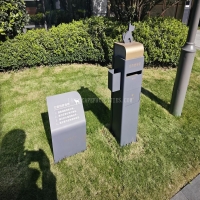Welcome to the website for landscape facilities products and knowledge.
How does the trash can’s design accommodate the use of QR codes for public feedback?
Modern urban environments are increasingly adopting smart solutions to improve public services, and trash can design is no exception. One innovative feature gaining traction is the integration of QR codes, allowing citizens to provide real-time feedback on waste management.
These QR codes are typically placed in a visible, easily accessible location on the trash can, often near the lid or on the side. Users can scan the code with their smartphones, which directs them to a feedback form or a dedicated app. This system enables quick reporting of issues like overflowing bins, maintenance needs, or even suggestions for better placement.
The design of these trash cans prioritizes durability and weather resistance to ensure the QR code remains scannable over time. Some models even include small protective covers or use high-contrast colors to enhance visibility. Additionally, the feedback mechanism is designed to be user-friendly, requiring minimal steps to encourage participation.
By incorporating QR codes, cities can gather valuable data to optimize waste collection routes, reduce litter, and improve overall cleanliness. This small but impactful design upgrade bridges the gap between citizens and municipal services, fostering a collaborative approach to urban sustainability.
As technology evolves, we may see further enhancements, such as dynamic QR codes linked to real-time bin capacity indicators or reward systems for active participants. The fusion of simple design and smart technology demonstrates how even everyday objects can become tools for civic engagement.
Related search:

Recommendation
Outdoor cat and dog feces trash can; Community pet trash can; Metal multi-color design